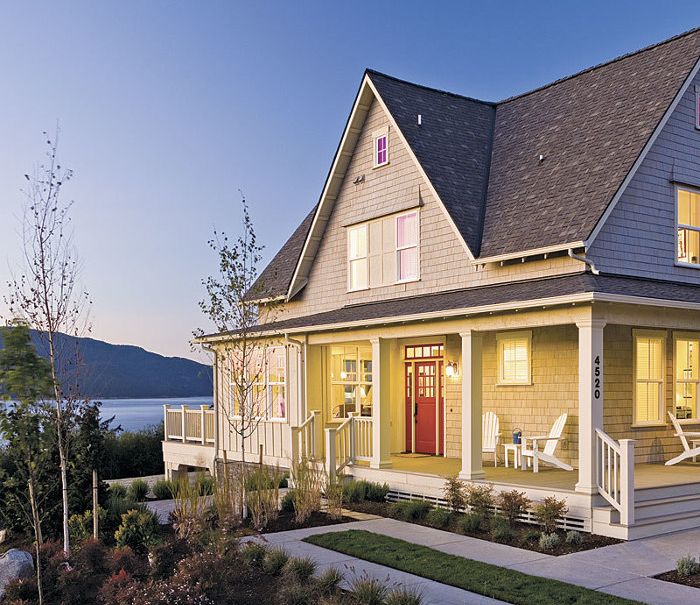Housing is Back. Is it Better?
Here’s how the tough lessons of the collapse made us more-responsible builders.

An excerpt from Boyce Thompson’s The New, New House titled “Housing Is Back. Is It Better?” outlines the way home building has been modified in the wake of the recession. He observes that innovative new homes got smaller, and they also got greener and more energy efficient. Builders went beyond the superficial “greenscaping” of the previous decade. In many cases, they reassessed all the products they were using to build houses, deleting ones that weren’t absolutely necessary and adding substitutes that performed better and lasted longer. Most important, some builders reexamined the engineering and the systems they used to build homes. They completely overhauled the inner workings of the houses they built and, in a huge break from tradition, called greater attention to the way the houses were built rather than to superficial amenities like built-in wine chillers.
Tens of thousands of homebuilders in this country went out of business during the recession, as new-home starts contracted by 75%. One of the biggest sectors of the American economy was devastated.
Against this backdrop of corporate carnage and financial distress, builders searched desperately for a market niche—a new type of home, a better location, or a new mode of operation—that might ensure their survival. Innovative new homes got smaller, and they also got greener and more energy efficient. Builders went beyond the superficial “greenscaping” of the previous decade, when about the most they would do is install compact-fluorescent light fixtures or carpets made with recycled soda bottles. In many cases, they reassessed all the products they were using to build houses, deleting ones that weren’t absolutely necessary and adding substitutes that performed better and lasted longer. Most important, some builders reexamined the engineering and the systems they used to build homes. They completely overhauled the inner workings of the houses they built and, in a huge break from tradition, called greater attention to the way the houses were built rather than to things like antiqued cabinets or built-in wine chillers.
Looking under the hood— and in the walls
One of the most exciting examples is the deconstructed model home done by Meritage Homes, the tenth-largest homebuilder in America. Meritage, which builds throughout the West and Southwest, began inviting potential buyers to look under the hood, so to speak—to see into the floor, ceiling, and walls. While half of their displays may be tricked out like the typical model home—with draperies, stainless-steel appliances, and tile floors—the other half look like they belong in a building-science museum. The idea is not only to lay bare superior construction practices but also to get people to linger and explore. The more time shoppers spend immersed in this experience, the builder reasons, the more likely they are to buy a home.
Competing builders also flocked to the models, but for a different reason. They used the models as an educational tool, since they displayed many best practices in an easy-to-learn, interactive setting. A Meritage deconstructed model in Phoenix, for instance, illustrates (with the help of drywall cutaways and videos) the airtight seal that polyurethane insulation makes when it’s sprayed into the ceiling and walls and around pipes and electrical wires. Placards in a skeletal living room point toward a heat-recovery ventilator nestled above the joists that recovers heat from stale indoor air before it’s exhausted outside, reducing energy use. A roped-off floor section demonstrates proper pouring of a post-tension slab, a foundation suspended by rebar that allows a house to adjust to shifting, sandy soil—an important precaution in some Southwest regions. To cap the memorable experience, a sign by the door proudly displays the house’s Home-Energy Rating System (HERS) score of 40, which is 60 points less than the code minimum and well below the score of any other new house in the neighborhood.
For more photos and details on new home building, click the View PDF button below.
Fine Homebuilding Recommended Products
Fine Homebuilding receives a commission for items purchased through links on this site, including Amazon Associates and other affiliate advertising programs.

Anchor Bolt Marker

Original Speed Square

Plate Level

























